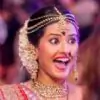Hi all,
Sharing some Links here >>
1. About the Family of Ashoka... - His wives , sons, grandsons, etc... Click Here to Read2. I found some thing interesting on Chanakya..
So, decided to share it here.. :))
->
Chanakya's "Novel" Method 2 Test Character of Ministers>
Click Here to Read^^^ A master politician, indeed. :-P
3.Historicals these days, seem to apply a lot of dramatization. Ashoka is not far behind. While Bindusara knew about the identity of Ashoka since the birth as his son, the show is portraying the opposite.
Dharma was made a Chief Queen before birth of Ashoka, but here Dharma is shown as an ill-treated woman.Here is an interesting read about the story of REAL Ashoka , Dharma and Bindusara. It contains scans from the Sanskrit texts, and the probable translation.
Click HERE to READ
4.I am back with a new post. The topic this time is quite different from the usual debate about Emperor Asoka. This post aims to critically examine the veracity of the information contained in ancient texts about Asoka, including Buddhist, Tibetan and Sanskrit texts.
Here is the Link to the Post:
Mauryan Emperor Asoka Killed 99 brothers to get the Throne | Fact or Myth ? And other Questions | A Debate
According to these texts, Asoka slew 99 of his brothers to occupy the throne of Magadha. This post analyses the circumstances in which Asoka ascended the throne of Magadha and whether he was truly guilty of fratricide on a mass scale.
The post is not only limited to the above topic. This post also aims to answer various questions like:-
- Did Asoka kill Susima? If yes, then why and how ?
- Was Asoka extremely ruthless and highly ambitious in his early youth ?
- Who did Bindusara want to succeed him to the throne - Asoka or Susima ?
- Who was Rani Dharma? Was she a commoner or a royal princess ?
I have made use of as many traditions and accounts as possible whose names are present in the post itself. English, Sanskrit, Pali, German, etc. scans from those texts are present along with them.
Will Keep Updating this Post for links.. Edited by history_geek - 10 years ago























 The dissatisfaction against foreign rulers started appearing in 320BC. The early uprisings were crushed by the successors of Alexander. But the uprising continued under a new leader named Chandragupta Maurya. After raising an army and persuading Indians to support his sovereignty he founded Maurya Empire. He went to war with Alexander's representatives and defeated Seleukos and added a large territory of the Macedonian Empire to Mauryan Empire.
The dissatisfaction against foreign rulers started appearing in 320BC. The early uprisings were crushed by the successors of Alexander. But the uprising continued under a new leader named Chandragupta Maurya. After raising an army and persuading Indians to support his sovereignty he founded Maurya Empire. He went to war with Alexander's representatives and defeated Seleukos and added a large territory of the Macedonian Empire to Mauryan Empire. 












